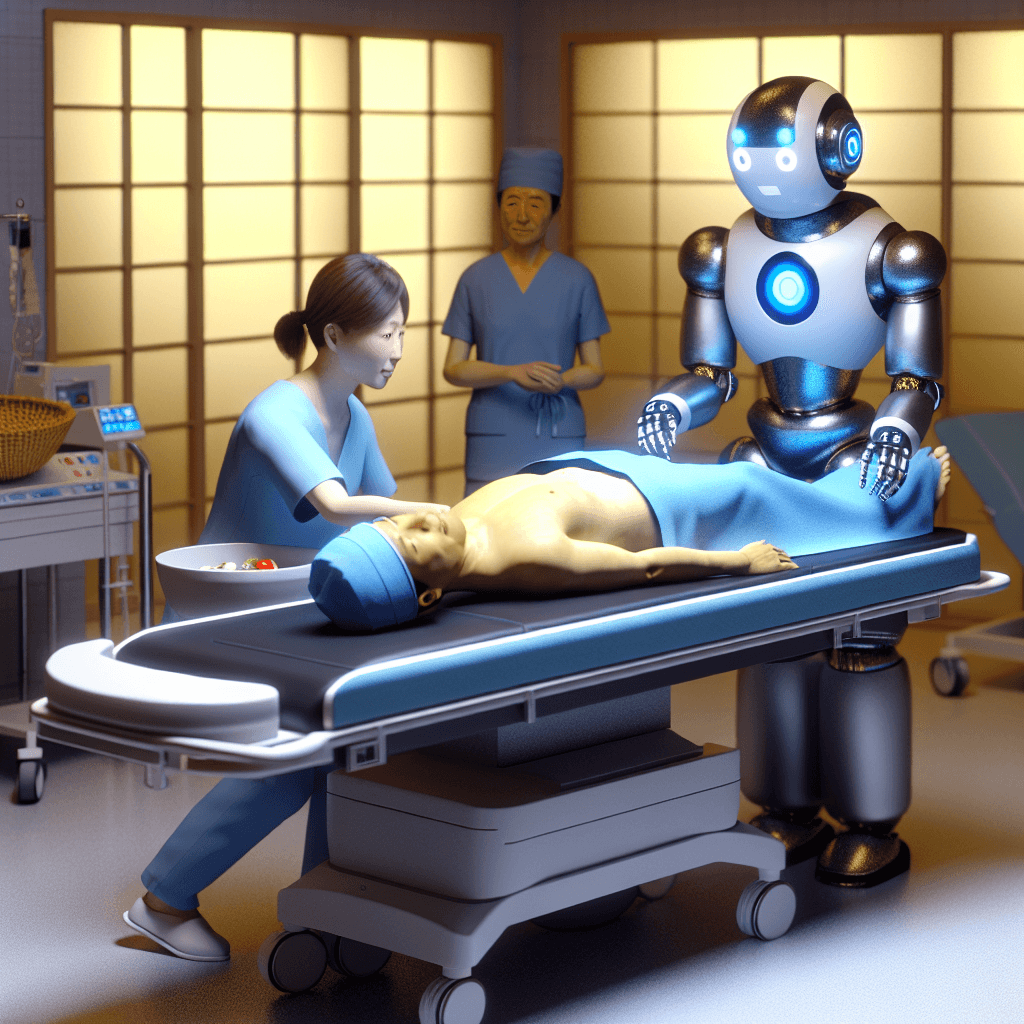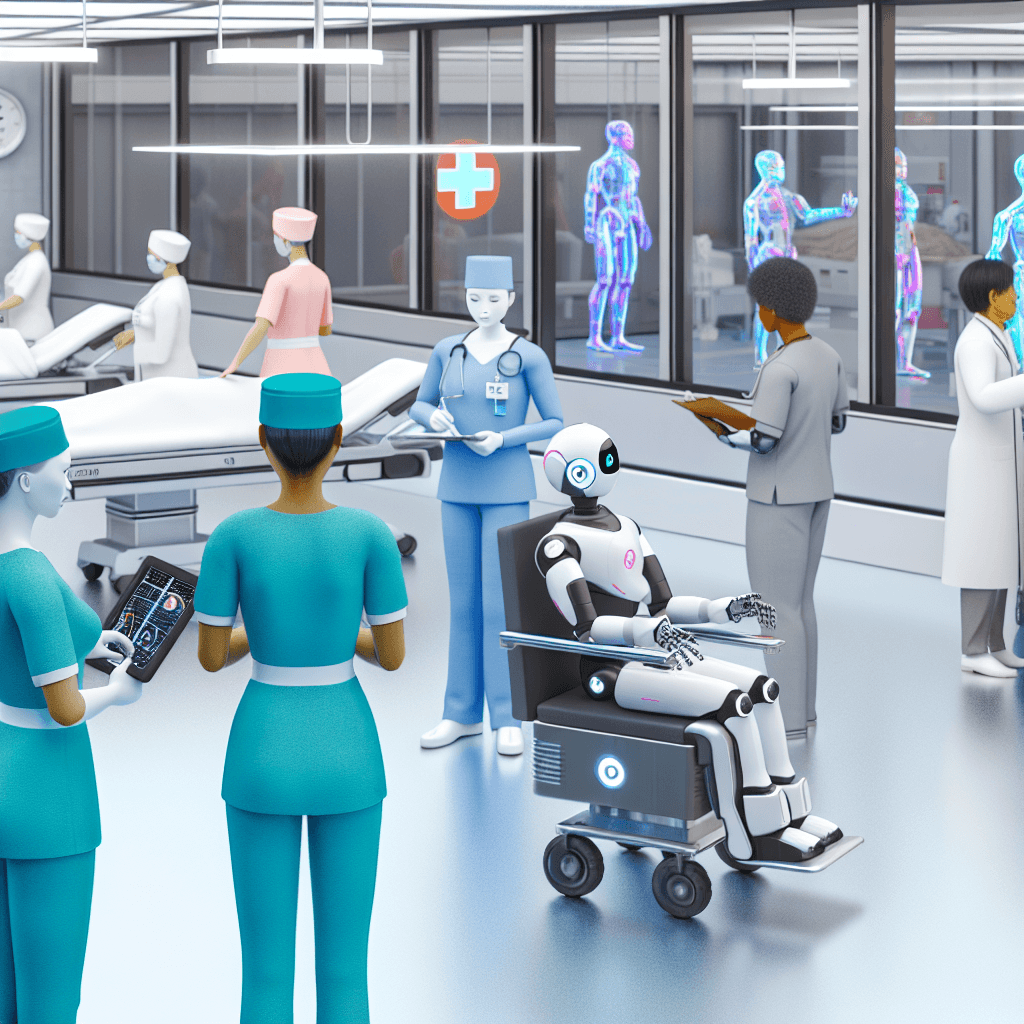Explore how Japan leads in healthcare robotics, enhancing patient care and surgical precision with innovative robotic technologies.
Healthcare Robotics in Japan

Table of Contents
- Healthcare Robotics in Japan: Pioneering the Future of Medical Technology
- The Rise of Robotics in Japanese Healthcare
- Categories of Healthcare Robots
- Leading Innovations in Japanese Healthcare Robotics
- Robear: The Nursing Care Robot
- Cyberdyne’s HAL: Hybrid Assistive Limb
- da Vinci Surgical Systems
- Impact and Benefits of Healthcare Robotics
- Challenges and Considerations
- Future Prospects
- Conclusion
Healthcare Robotics in Japan: Pioneering the Future of Medical Technology

Japan, a nation renowned for its technological innovation, has been at the forefront of integrating robotics into various sectors, including healthcare. The development and deployment of healthcare robots in Japan not only reflect the country’s advanced robotic technologies but also address significant challenges such as an aging population and labor shortages in healthcare. This article explores the landscape of healthcare robotics in Japan, highlighting key innovations, their impacts, and future prospects.
The Rise of Robotics in Japanese Healthcare
The integration of robotics in healthcare is part of Japan’s response to a demographic crisis where a significant portion of the population is elderly. The Japanese government, along with private sector companies, has heavily invested in healthcare robotics to provide efficient, cost-effective solutions and to alleviate the burden on healthcare workers.
Categories of Healthcare Robots
Healthcare robots in Japan can be broadly categorized into several types, each serving different functions:
- Assistive Robots: These robots help in caring for the elderly and disabled, aiding in mobility and daily activities.
- Surgical Robots: Employed in operating rooms to increase the precision and efficiency of surgical procedures.
- Diagnostic Robots: Used for diagnostics, these robots can navigate the human body to detect and diagnose various conditions without invasive procedures.
- Disinfection Robots: These robots are used to sterilize medical facilities, crucial in maintaining a germ-free environment and preventing hospital-acquired infections.
- Pharmacy Automation Robots: These systems automate the dispensing and management of medications, reducing errors and improving efficiency.
Leading Innovations in Japanese Healthcare Robotics
Japan’s commitment to healthcare robotics has led to several pioneering innovations, some of which have gained international recognition:
Robear: The Nursing Care Robot
Developed by RIKEN and Sumitomo Riko Company Limited, Robear is designed to lift patients from beds into wheelchairs, reducing the physical strain on caregivers. Its friendly bear-like appearance helps in making patients more comfortable and receptive to robotic care.
Cyberdyne’s HAL: Hybrid Assistive Limb
Cyberdyne’s HAL is a wearable exoskeleton that assists individuals with lower limb disabilities. By detecting bio-electric signals from the wearer when intending to move, HAL supports and enhances user mobility. This technology not only aids in rehabilitation but also enables individuals to perform tasks they would otherwise find difficult.
da Vinci Surgical Systems
While not uniquely Japanese, the da Vinci Surgical System has been widely adopted in Japan for its high precision and minimization of surgical risks. This robotic system allows surgeons to perform complex procedures with more control and less invasiveness than traditional surgery.
Impact and Benefits of Healthcare Robotics
The deployment of robots in healthcare settings has brought numerous benefits:
- Enhanced Patient Care: Robots provide assistance and precision in care, improving patient outcomes and satisfaction.
- Reduced Healthcare Worker Strain: By taking over repetitive and physically demanding tasks, robots alleviate the workload on human staff, reducing burnout and injuries.
- Increased Efficiency: Automation in tasks like medication dispensing and patient data management speeds up operations and reduces errors.
- Infection Control: Robots that specialize in disinfection help maintain sterile environments, crucial in healthcare settings.
Challenges and Considerations
Despite the advantages, the integration of robotics in healthcare also presents challenges:
- High Costs: The development and implementation of robotic technologies can be expensive, potentially limiting widespread adoption.
- Technical Issues: Dependence on complex machinery can lead to operational challenges, including malfunctions and the need for regular maintenance.
- Ethical and Social Concerns: There are ongoing debates about patient privacy, the role of human touch in care, and the potential for job displacement due to automation.
Future Prospects
Looking forward, the trajectory of healthcare robotics in Japan is geared towards more integrated, intelligent systems that can provide holistic care. Innovations in AI and machine learning will likely drive the next wave of advancements, making robots more autonomous and capable of handling complex healthcare tasks.
Conclusion
Japan’s leadership in healthcare robotics is transforming the medical landscape, offering innovative solutions to pressing challenges. While there are hurdles to overcome, the potential benefits of these technologies in enhancing patient care, reducing worker strain, and improving operational efficiencies are immense. As Japan continues to pioneer developments in this field, the global healthcare system watches and learns, potentially adopting similar technologies to address their own healthcare challenges.
With ongoing research, investment, and collaboration between tech companies and medical institutions, the future of healthcare robotics in Japan is not only promising but also a model for the rest of the world to consider.








